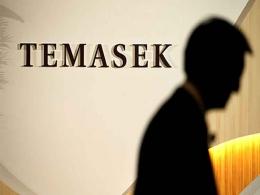India banks are pushing plastic again, hoping that credit card sales will lift profits in a market where the competition is tough, the opportunity large, and the risks high.
Fewer than 18 million of India's 1.2 billion people use credit cards. In China, a country with a slightly higher population, more than 200 million credit cards were in use as of a year ago.
Lenders in India say a focus on higher end customers will be key to the success of a second credit card push, but if history is a guide, it still faces high hurdles.
India's banks cancelled millions of cards when a wave of customer defaults followed aggressive growth pre-financial crisis. Banks vow to be more selective this time as they tap rising spending power and the high interest rates and fees they can charge on cards.
"You won't find our guys standing at the airports and asking for your boarding pass and issuing a card free of cost," said Bipin Kabra, chief financial officer of Dhanlaxmi Bank, a small lender in Kerala that began issuing cards in 2010 and only targets existing customers.
"We know what it is, we have seen that cycle," said Kabra, who previously worked at ICICI Bank.
ICICI was India's most prolific card issuer during the boom but halved its cards portfolio to about Rs 48 billion rupees ($1.08 billion) at end-March 2011 versus 2008.
Private lender HDFC Bank and foreign banks such as Citigroup and Standard Chartered are the most active card issuers in a country where state banks have 70 percent of the overall loan market.
Card usage is low in India, with total spending of 755 billion rupees ($17 billion) in the year that ended in March, central bank data show, equivalent to just 4 per cent of retail sales in an economy where more than 90 per cent of shopping takes place in mom and pop stores.
Between 2005 and 2007 the number of cards in India jumped by 50 per cent, peaking that year at more than 26 million. After the financial crisis, it fell to 18 million.
Indian consumers, on the whole, have not fully embraced the idea of using credit cards, preferring debit cards instead, with roughly 230 million in circulation.
Also, only about 30 per cent of Indian customers carry balances over from month to month -- resulting in bank fees. More developed economies have much higher rates.
Of the credit cards in circulation, however, spending is rising steadily as more Indians eat in expensive restaurants, buy plane tickets and pay cell phone bills online. Government data show spending rose 21 per cent by end-March. Credit cards are mostly used by educated, urban, affluent Indian customers.
During the boom, banks set up stalls in shopping malls and office buildings and used aggressive telemarketing to sign up new customers, activity that all-but-halted during the downturn.
Kotak Mahindra Bank launched credit cards in 2008 and is still losing money on the business. Its head of consumer banking, K.V.S. Manyan, said the days of high default rates and poor due diligence by banks are over.
Now, many banks are focused on premium cards, targeting high-end customers with higher credit limits, insurance coverage and reward points, as losses tend to be lower at the higher end.
HDFC Bank launched a "premium" credit card on Tuesday for what they call the super rich. For a $675 annual fee, a person worth at least $1 million gets some insurance benefits, air miles and access to more than 600 airport lounges across the world.
Potential Profits
If managed well, credit card operations can reap huge profits. Net interest margins on cards in India are around 23 per cent, compared with 2.5 to 4 per cent on other loans.
"For banks this is a very interesting product. It generates fantastic yields, very good fees income from transaction and service charges," said Rahul Jain, analyst at HDFC Securities.
In April, mid-sized IndusInd Bank bought the local card business of Deutsche Bank and said it expects the acquisition to boost net interest margin and profits.
Another Indian lender, Yes Bank, plans to launch credit cards in the fiscal year that starts next April.
London-based StanChart, one of the biggest foreign banks in India, expects growth of 30-35 per cent in new customers this year, said Shyamal Saxena, head of retail banking products.
"We have stepped up our customer acquisitions. We've also beefed up our distribution," he said. StanChart and Citi target customers beyond existing depositors.
Foreign banks lack the branch networks of local lenders like ICICI and HDFC, India's biggest card issuers, but tend to attract the most well-heeled customers in a country where incomes are rising fast as the economy grows 8 per cent a year.
...And Pitfalls
Banks in India want to avoid a repeat of 2006-2008, when aggressive competition led to worsening credit quality. Delinquency rates on cards in India rose to nearly 8 or 9 per cent in 2009 and 2010, said Ashvin Parekh, national leader for global financial services at Ernst & Young in India.
Part of the problem was novelty. Many consumers unused to credit in a country where more than half the population is outside the banking sector spent their way into trouble with their first cards.
Banks were forced to cancel cards and cut credit limits, shifting focus to safer, if less profitable, secured loans.
"One thing that we want to ensure is that customers don't get over-leveraged," StanChart's Saxena said. "Too many banks are chasing the same set of customers."





